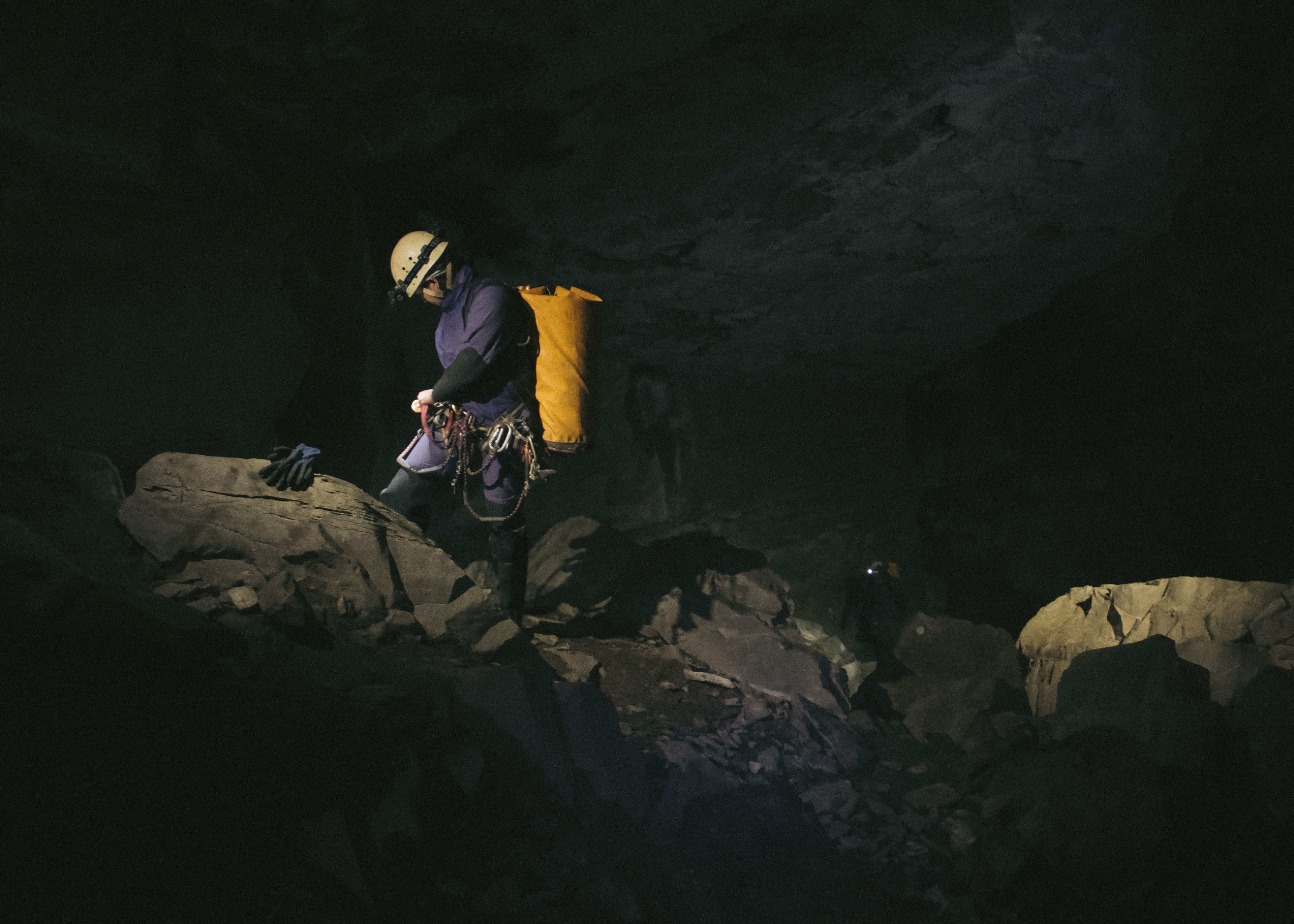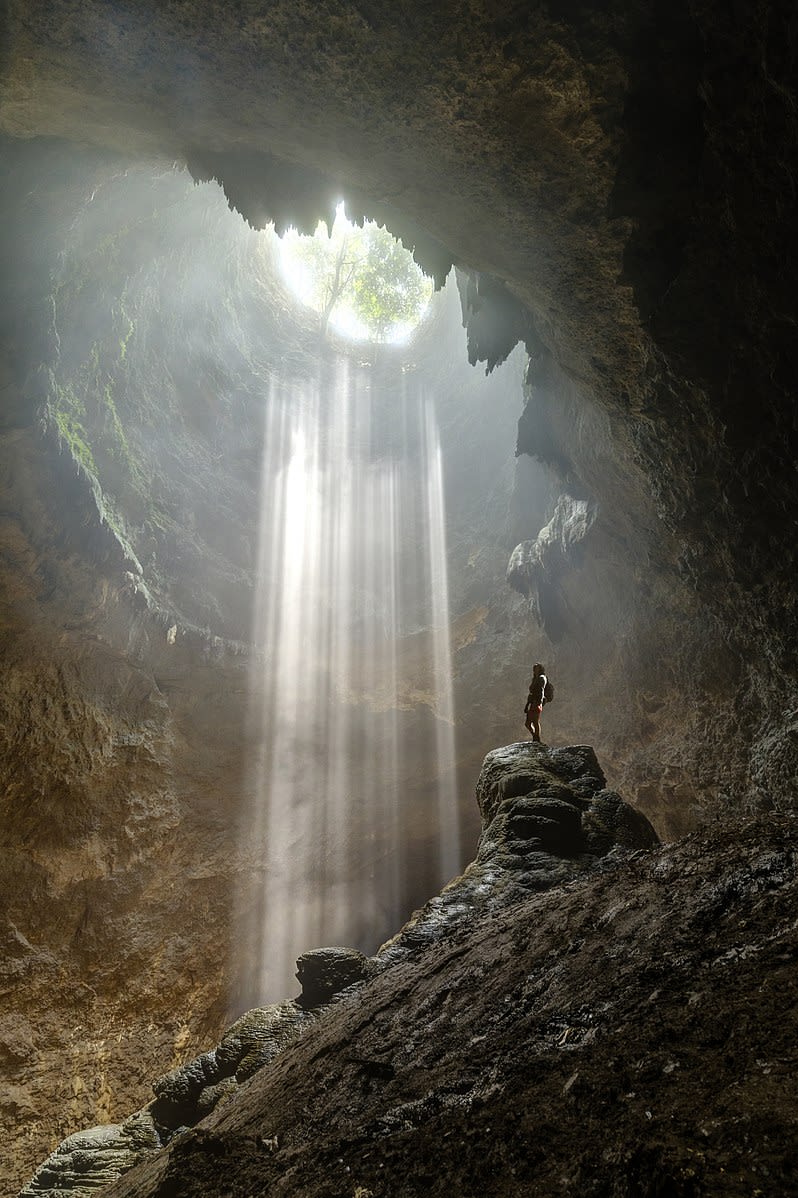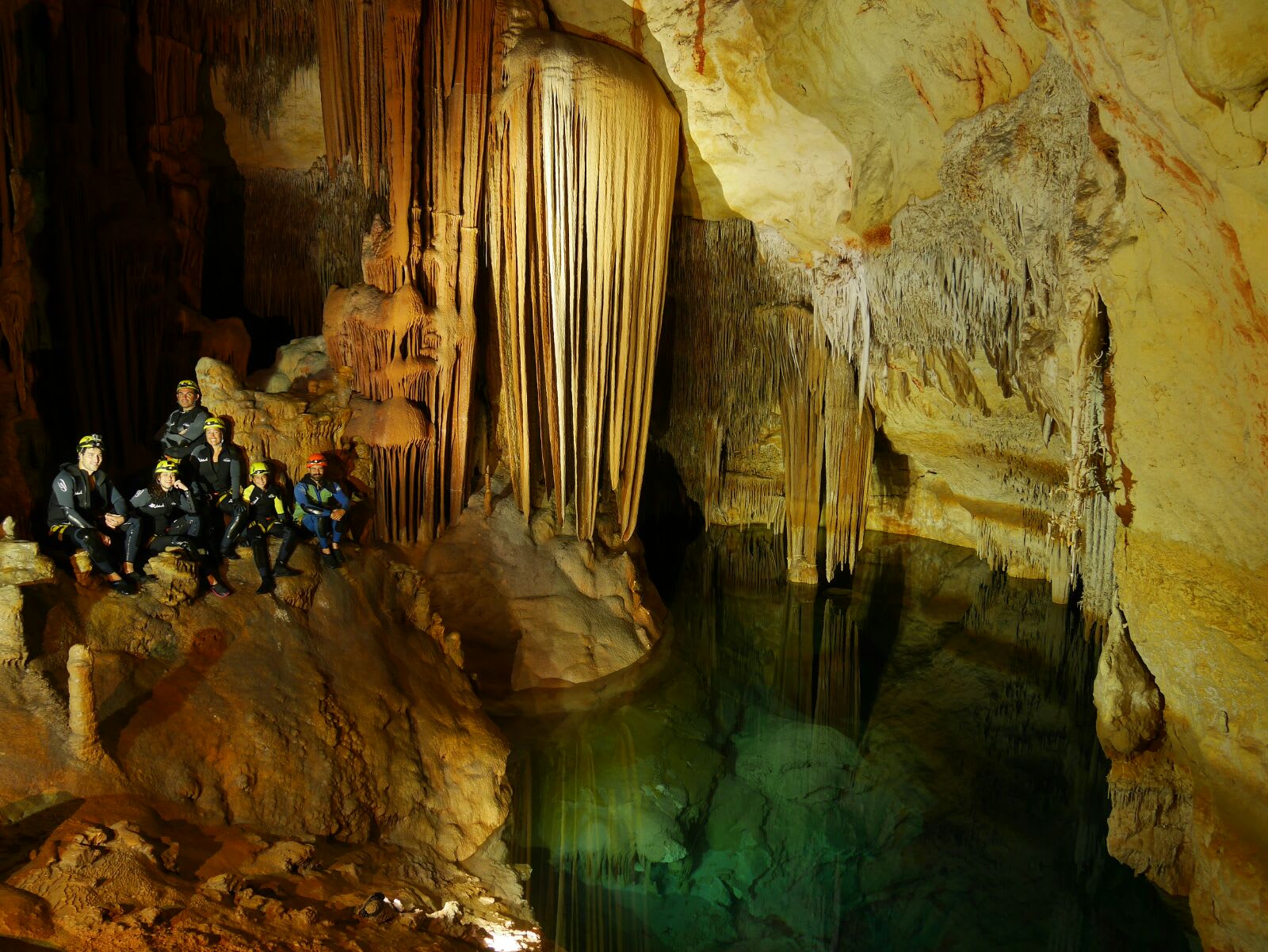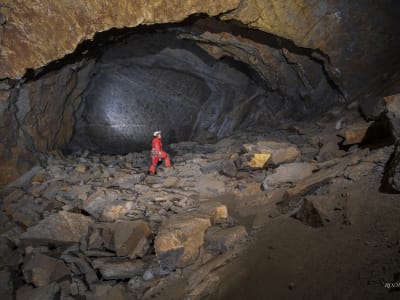
The best Caving activities
97 activities match your criteria

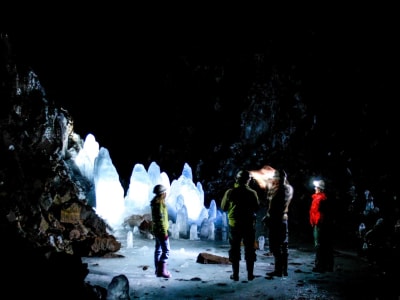
Guided Ice Caving Excursion in the Lofthellir Ice Cave from Mývatn

Caving in the Lava tubes of the volcano of Piton de la Fournaise, Reunion Island
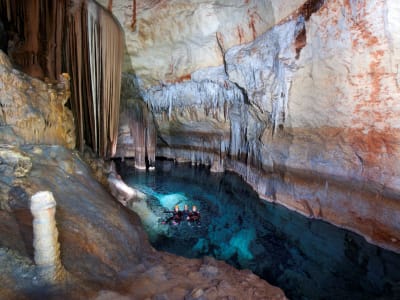
Sea Caving Excursion into the Cova des Coloms, in Mallorca

Sea Caving in Cova des Coloms, from Cala Romantica, Mallorca
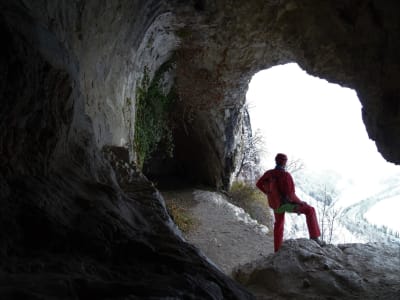
Caving excursion in the cave of Balme, Haute-Savoie
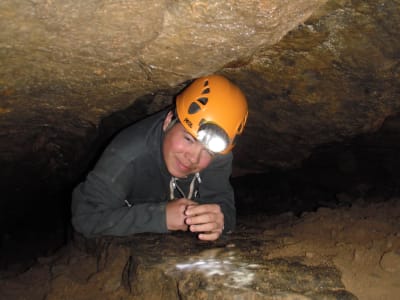
Caving excursion in the Grotte des Jeunes in Ardèche
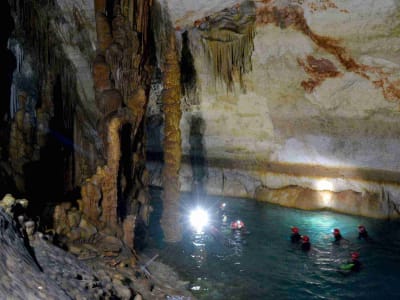
Sea Caving Excursion in Cova des Coloms by Boat, from Porto Cristo
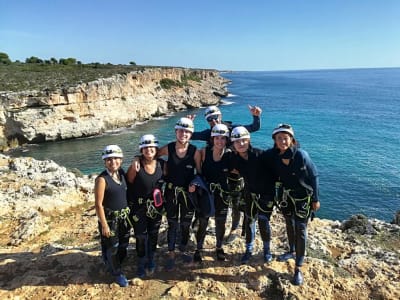
Sea caving excursion to the Cueva des Coloms from Cala Romántica, Majorca
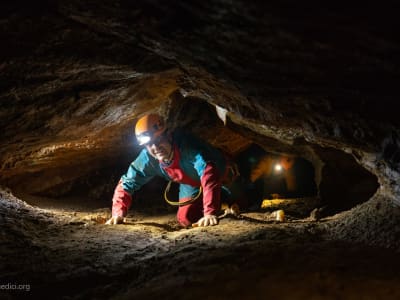
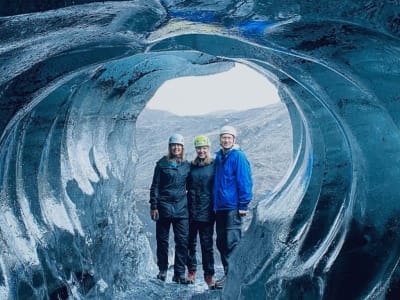
Katla Ice Caves Tour in the Kötlujökull Glacier from Vik
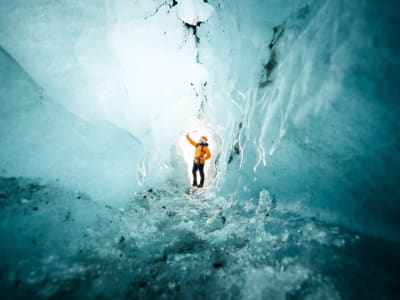
Blue Ice Caving Excursion in Vatnajökull Glacier from Jökulsárlón Glacier Lagoon

Bivouac and Caving at the Fontaine de Champclos near Les Vans, Ardèche

Guided Ice Caving Excursion in the Lofthellir Ice Cave from Mývatn

Caving in the Lava tubes of the volcano of Piton de la Fournaise, Reunion Island

Sea Caving Excursion into the Cova des Coloms, in Mallorca

Sea Caving in Cova des Coloms, from Cala Romantica, Mallorca

Caving excursion in the cave of Balme, Haute-Savoie

Caving excursion in the Grotte des Jeunes in Ardèche

Sea Caving Excursion in Cova des Coloms by Boat, from Porto Cristo

Sea caving excursion to the Cueva des Coloms from Cala Romántica, Majorca

Caving in the Aven des Côtes near Vallon-Pont-d'Arc, Ardèche

Katla Ice Caves Tour in the Kötlujökull Glacier from Vik

Blue Ice Caving Excursion in Vatnajökull Glacier from Jökulsárlón Glacier Lagoon
About Caving
What is Caving? The Ultimate Guide to an Underground Adventure
Caving, also known as spelunking, is a thrilling exploration of natural underground environments, offering a unique blend of adventure, discovery, and connection with nature. From narrow passageways to vast subterranean chambers adorned with stunning stalactites and stalagmites, to the dramatic landscapes of lava tunnels, caving reveals the Earth's hidden wonders. Whether you're climbing through underground tunnels, marvelling at the ancient formations, or exploring the fascinating volcanic caves created by flowing lava, spelunking provides an unforgettable experience for all levels, from beginners to seasoned explorers.
The History and Origins of Caving
Caving has a rich history that spans millennia. Early humans ventured into caves for shelter, leaving behind fascinating cave paintings and artifacts that offer a glimpse into prehistoric life. Some of the most famous examples of ancient cave art can be found in the caves of Lascaux in France and Altamira in Spain, dating back more than 30,000 years.
The modern practice of caving, or speleology (the scientific study of caves), began to take shape in the 18th and 19th centuries. Explorers sought to understand the geological forces that formed these underground worlds. Among the pioneers was French geographer Édouard-Alfred Martel, often considered the father of modern caving, who led numerous expeditions into some of the deepest and most complex cave systems in Europe.
Lava tunnels (or lava tubes) have a different origin story. These volcanic formations are created when lava flows beneath the surface, cooling and hardening into long tunnels. Found in volcanic regions around the world, lava tunnels offer a different kind of caving experience, showcasing the incredible power and creativity of volcanic activity. Today, caving, whether in limestone caves or lava tunnels, is a popular recreational activity that attracts adventurers looking for unique and immersive experiences.
Types of Caving Practices
Caving can be experienced in many different ways depending on your level of skill, interest, and sense of adventure. Whether you prefer the structured environment of a show cave or the challenge of exploring wild caves or volcanic tunnels, there’s a caving style for everyone.
Show Caving
Show caving is the most accessible form of spelunking, ideal for families and beginners. These caves are developed for public tours and often include paved paths, lighting, and guided routes. For those new to caving, it’s an excellent introduction to the underground world, offering safe and comfortable exploration. Popular show caves, such as the Blue John Cavern in the UK or the Jeita Grotto in Lebanon, provide stunning natural beauty in an easily navigable format.
Wild Caving (Exploration)
For the more adventurous, wild caving allows for the exploration of undeveloped caves. Wild caving often requires crawling, climbing, and navigating through narrow tunnels or large chambers with minimal support or infrastructure. This type of spelunking offers the thrill of discovery and a raw connection with nature. Wild caving can range from relatively easy to highly technical, depending on the cave system and conditions.
Lava Tube Exploration
Exploring lava tunnels, or lava tubes, is a fascinating form of caving that takes place in volcanic regions. Unlike limestone caves formed by water erosion, lava tubes are created by the flow of molten lava beneath the Earth's surface. As the lava cools, it forms tunnels that can stretch for kilometres. Lava tubes are often easier to explore compared to traditional caves, as their passages are typically smooth and spacious. Notable examples include the Thurston Lava Tube in Hawaii and the Cueva de los Verdes in the Canary Islands. These volcanic tunnels offer a unique glimpse into Earth's fiery past.
Vertical Caving (SRT – Single Rope Technique)
For those looking for a more technical challenge, vertical caving involves descending into or ascending out of caves using ropes and specialised equipment. Known as SRT (Single Rope Technique), this form of caving is physically demanding and requires training in rope work and climbing techniques. Vertical caving allows access to deep shafts and hidden cave systems, often revealing some of the most awe-inspiring underground features.
Cave Diving
Cave diving is the most extreme and technical form of caving. It combines caving with scuba diving to explore underwater cave systems. Cave divers require specialised training and equipment to safely navigate submerged passages. This thrilling yet dangerous sport can be experienced in locations like Mexico’s cenotes or the freshwater caves of Florida, offering a surreal underwater adventure.
Essential Caving Equipment
Caving, especially in its more challenging forms, requires specific gear to ensure safety and comfort. Whether you’re venturing into a limestone cave or navigating a lava tube, the following equipment is essential:
Helmet with Headlamp
A helmet is non-negotiable when caving, protecting your head from falling rocks and low-hanging ceilings. Most helmets come equipped with a headlamp, which is crucial for navigating the dark, often pitch-black, cave environments. A reliable LED headlamp with spare batteries is essential for any caving adventure.
Caving Suit
A robust, waterproof caving suit protects you from cold, damp, and muddy conditions. Depending on the cave environment, especially in lava tunnels that tend to be drier, you may opt for a lightweight suit. In colder or wetter caves, layering thermal clothing under your suit helps regulate body temperature.
Footwear
Proper footwear is critical for maintaining grip and stability on slippery cave surfaces. Caving boots, especially those designed with ankle support and a solid grip, help you navigate rocky or uneven terrain. In lava tunnels, sturdy hiking boots with good tread are often sufficient for the relatively smoother paths.
Rope Equipment (for Vertical Caving)
For vertical caving, specialised rope equipment such as a harness, descenders, and ascenders is necessary. This equipment allows you to safely rappel down vertical shafts or climb back up. Mastering Single Rope Techniques (SRT) is essential for navigating these complex environments.
Gloves and Knee Pads
Caving often requires crawling or squeezing through tight spaces, making gloves and knee pads invaluable for protection. Padded gloves prevent your hands from getting scraped, while knee pads provide comfort and protection on rough surfaces.
Backpack with Essentials
A lightweight, durable backpack is key to carrying all necessary gear, including food, water, a first aid kit, and extra clothing. Make sure to include emergency items such as a thermal blanket, whistle, and a map of the cave system.
Best Caving Spots Around the World
Caving locations around the world offer a diverse range of experiences, from limestone caves to volcanic lava tunnels. Here are some of the top spots to consider for your next caving adventure:
Waitomo Caves, New Zealand
The Waitomo Caves are famous for their glowworm-lit ceilings, providing a magical underground experience. Visitors can embark on a boat tour or engage in black water rafting, a thrilling activity that involves floating through the cave’s underground rivers on inner tubes.
Lava Tubes at Piton de la Fournaise, Réunion Island
Réunion Island, home to the active volcano Piton de la Fournaise, offers incredible opportunities for exploring lava tunnels. These tunnels were formed by past volcanic eruptions, and walking through them allows you to witness the raw power of volcanic forces up close. The island’s volcanic landscape, combined with lush tropical surroundings, makes it a truly unique destination for spelunkers interested in lava tube exploration. The Tunnel Bleu is one of the most popular lava tubes to visit, offering fascinating geological formations and a surreal underground journey.
Lava Tubes in Iceland
Iceland’s volcanic landscape is home to many impressive lava tunnels, such as the Raufarhólshellir lava tube. Exploring these tunnels reveals the impressive geological formations created by volcanic eruptions, with colourful mineral deposits and smooth, flowing rock walls.
Carlsbad Caverns, USA
One of the world’s most famous cave systems, Carlsbad Caverns in New Mexico offers visitors a chance to explore vast underground chambers. The "Big Room" is a must-see, with its enormous size and spectacular limestone formations.
Thurston Lava Tube, Hawaii
Located in Hawaii Volcanoes National Park, Thurston Lava Tube is a popular destination for lava tube enthusiasts. Walking through this tunnel, formed by molten lava thousands of years ago, is a surreal experience that showcases the power of volcanic activity.
Son Doong Cave, Vietnam
The largest cave in the world by volume, Son Doong Cave in Vietnam, is an unparalleled caving experience. Its massive chambers contain their own ecosystems, with jungles, rivers, and even clouds forming inside. However, this multi-day expedition is only for experienced cavers.
Key Caving Vocabulary
Lava Tube: A tunnel formed by flowing lava beneath the surface of a solidified lava flow.
Speleology: The scientific study of caves.
Stalactites and Stalagmites: Mineral formations found in caves, growing from the ceiling and floor, respectively.
Potholing: A British term used to describe caving, particularly when exploring vertical shafts.
SRT (Single Rope Technique): A method of rope climbing used to navigate vertical cave passages.
The Benefits of Caving
Caving, whether in traditional limestone caves or lava tubes, offers both physical and mental health benefits. Physically, it improves endurance, strength, and flexibility as you navigate through often challenging terrain. Crawling, climbing, and squeezing through tight spaces engage muscles and promote balance and coordination.
Mentally, caving fosters a deep connection with nature. Exploring the silence and solitude of underground spaces can provide a profound sense of peace and mindfulness, offering a break from the noise and stress of everyday life. The thrill of discovery, especially in lava tunnels or newly explored cave systems, brings a sense of adventure and achievement.
Tips for Getting Started in Caving
New to caving? Here are some practical tips to ensure you have a safe and enjoyable experience:
Start with a Guided Tour: Beginners should always start with a guided caving experience to learn basic techniques and safety measures.
Research Lava Tubes or Caves Suitable for Beginners: If you’re interested in lava tubes, look for well-established routes that are safe for first-timers.
Invest in Proper Equipment: Rent or buy the necessary gear, including helmets, headlamps, and sturdy boots, to stay safe and comfortable during your adventure.
Never Cave Alone: Always go caving with a group and let someone outside your party know your plans and expected return time.
Unveil the Earth's Hidden Wonders – Book Your Caving Adventure Today!
Caving opens the door to some of the Earth’s most awe-inspiring and enigmatic landscapes. Whether you’re navigating ancient limestone formations or walking through the lava tubes of active volcanoes like Piton de la Fournaise in Réunion or Iceland's Raufarhólshellir, each cave tells a story millions of years in the making. The thrill of discovery, combined with the serene beauty of these underground worlds, makes caving a one-of-a-kind adventure that offers both physical and mental challenges.
For beginners and seasoned explorers alike, caving and lava tube exploration promise unforgettable experiences—from the glowworm-lit halls of Waitomo to the volcanic tunnels of Réunion Island. Each destination offers something unique, and with Manawa.com, you can easily plan and book the caving experience that suits your sense of adventure. Safety, guidance, and professionalism are always at the forefront, ensuring you can explore these hidden realms with confidence.
So, are you ready to step into the unknown, descend into the Earth’s depths, and embark on a thrilling journey through caves and lava tubes? Start planning today, and let your underground adventure begin!
